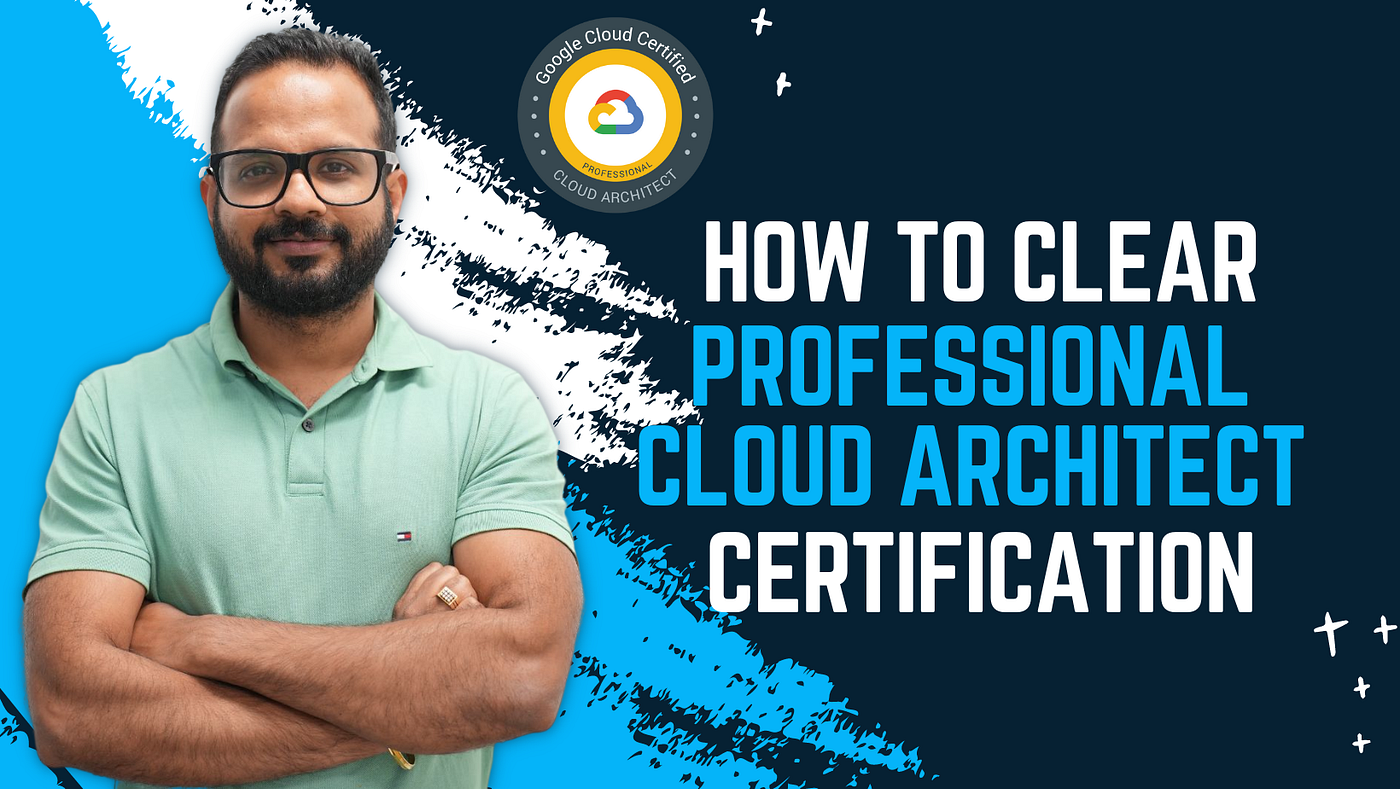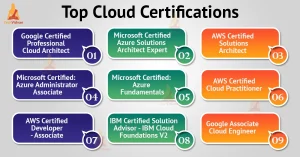Technology
5 Crowdfunded Products That Delivered on the Hype
Nemo enim ipsam voluptatem quia voluptas sit aspernatur aut odit aut fugit, sed quia consequuntur magni dolores.

Introduction
Crowdfunding lets creators pitch ideas directly to fans. Backers fund projects months or years before products exist. But many campaigns overpromise and underdeliver. Still, a handful of crowdfunded products genuinely delivered on the hype. These success stories show what’s possible when vision, planning, and community support come together. In this article, we look at five standout products that launched on Kickstarter or Indiegogo—and then reached backers’ hands on time, on budget, and with great quality. If you’ve ever wondered which campaigns turned dreams into reality, read on to discover these inspiring wins.
Top 5 Crowdfunded Products That Delivered on the Hype
1. Pebble Smartwatch
The Pebble smartwatch was among the first to prove crowdfunding could sparking a tech revolution. In 2012, its creators sought $100,000 on Kickstarter. They ended up raising over $10 million—the largest amount at the time .
Key Features and Success Factors
-
E-Paper Display: Easy to read in sunlight and low power draw.
-
Seven-Day Battery Life: Far longer than rival smartwatches.
-
Cross-Platform Support: Worked on both iOS and Android from day one.
-
App Ecosystem: Early focus on third-party apps gave users more choice.
Pebble shipped the first batch on time in early 2013. Backers received regular updates. Software updates kept the watch fresh for years. Though the company later sold to Fitbit, Pebble’s model set a gold standard for successful crowdfunding.
2. Oculus Rift Development Kit
Oculus Rift reignited interest in virtual reality. In 2012, Palmer Luckey and team asked for $250,000 on Kickstarter. They closed at $2.4 million .
What Made It Work
-
Prototype Demos: Early videos showed real VR immersion.
-
Developer Focus: The first kits targeted game developers, not mass consumers.
-
Clear Roadmap: Oculus outlined hardware and software milestones.
-
Transparent Communication: Backers saw monthly progress reports.
The Development Kit 1 (DK1) shipped in March 2013, followed by DK2 in mid‑2014. Both kits reached backers in line with promises. Oculus later sold to Facebook for $2 billion, proving VR could be more than a niche hobby.
3. Exploding Kittens Card Game
Sometimes the simplest ideas deliver the biggest smiles. Exploding Kittens launched on Kickstarter in 2015 with a quirky premise: don’t draw the exploding kitten card. It aimed for $10,000 but raised over $8.7 million from 219,382 backers .
Recipe for Success
-
Famous Creators: Involvement of The Oatmeal cartoonist Matthew Inman grabbed attention.
-
Easy-to-Learn Rules: Quick setup and short play time made it ideal for all ages.
-
Strong Social Media Push: Memes and sketches fueled word‑of‑mouth.
-
Clear Production Plan: Backers knew exactly when to expect delivery.
By mid‑2015, backers across the world received decks and expansions. Today, Exploding Kittens has sold millions and spawned mobile apps and spin‑off games.
4. Coolest Cooler
The Coolest Cooler aimed to reinvent the beach cooler. Launched in 2014, it offered a blender, Bluetooth speaker, USB charger, and more—all built into one rolling cooler. The campaign set a record with over $13 million in pledges .
Innovations and Challenges
-
Multiple Features: Blender, bottle opener, LED light, and removable speakers.
-
Detailed Specs: Backers saw 3D renders, prototypes, and feature lists.
-
Step‑by‑Step Updates: Frequent videos showed assembly and testing.
Despite some production delays, the Coolest Cooler delivered its first units by late 2015. While some later backers faced longer waits, the core product shipped and worked as promised. It remains a case study in both ambition and the need for robust manufacturing plans.
5. Tile Bluetooth Tracker
Tile reinvented how we find lost items. Launched on Indiegogo in 2013, it raised over $2 million for tiny Bluetooth tags that ring your phone or make the tag ring .
Why Tile Succeeded
- Simple Problem, Simple Solution: Everyone loses keys or wallets.
- Low Price Point: Early bird pricing under $20 made it an easy add to cart.
- Networking Power: When other users’ phones pass your lost Tile, they send anonymous location pings to your app.
- Scalable Manufacturing: Tile secured a reliable supply chain before launch.
Tile shipped first tags in early 2014, and the app launched alongside. Today, Tile has sold over 20 million units, and the concept inspired many imitators—but none have matched its user base.
Lessons from Successful Crowdfunding
These five products that delivered on the hype share common traits:
- Clear Vision: Backers understood exactly what they would get.
- Strong Prototypes: Early demos showed real functionality.
- Open Communication: Frequent updates built trust even when delays hit.
- Realistic Goals: While some campaigns raised huge sums, each team scoped features to what was achievable.
- Post‑Launch Support: Companies continued to update software or accessories after shipping.
These elements help separate true success stories from projects that fail to deliver.
Why Some Campaigns Fail
By contrast, many crowdfunded products falter due to:
- Overambitious Features: Promising too much too soon.
- Poor Manufacturing Planning: Underestimating production costs or timelines.
- Lack of Updates: Silence erodes backer confidence.
- Insufficient Funding Stretch Goals: Draining resources to meet every backer demand.
Learning from both successes and failures is key to future crowdfunding wins.
Tips for Backers and Creators
For Backers
- Research the Team: Look for prior experience in hardware or product launch.
- Check Prototypes: Projects with clear videos or working models are safer bets.
- Read Comments: Backers often share signals of red flags or positive updates.
For Creators
- Build a Real Prototype: Show it working before raising funds.
- Plan Manufacturing: Partner with experienced factories early.
- Communicate Clearly: Set realistic timelines and stick to them.
- Test Logistics: Ensure shipping costs and processes are solid.
Conclusion
Crowdfunding has launched thousands of ideas—but only some live up to the promise. Pebble, Oculus Rift, Exploding Kittens, Coolest Cooler, and Tile stand out as crowdfunded products that actually delivered on the hype. They combined clear vision, strong prototypes, and solid planning to turn backer trust into real, high‑quality products. Whether you’re a backer seeking new innovations or a creator with a big idea, these success stories offer valuable lessons. Done right, crowdfunding can transform dreams into reality—one well‑executed campaign at a time.
Technology
Education and E-Learning App Development Cost in New york, USA

Introduction
New York has become one of the top destinations for businesses and institutions investing in education and e-learning app development. With the growing demand for remote and hybrid learning, schools, universities, and training organizations are turning to technology to deliver flexible, engaging, and personalized education.
As a leading global tech hub, the city offers access to some of the best mobile app development companies in New York, helping businesses build powerful, secure, and innovative e-learning platforms.
According to recent reports, the U.S. EdTech market is projected to exceed $100 billion by 2030, with New York playing a major role in driving this growth. Whether you’re a school, startup, or corporate training provider, understanding the cost of e-learning app development in New York is key to making informed investment decisions.
Average Cost of Education & E-Learning App Development in New York
The cost of developing an education or e-learning app in New York generally ranges between $40,000 and $250,000, depending on complexity, features, and design requirements.
Here’s a simple breakdown:
- A basic education app with user login, video lessons, and quizzes can cost between $40,000 and $70,000.
- A feature-rich learning management system (LMS) with live sessions, analytics, and admin dashboards may cost $80,000 to $150,000.
- A custom AI-powered or AR/VR-enabled e-learning platform can go up to $200,000–$250,000+, depending on advanced features and integrations.
These costs usually include design, development, testing, and deployment handled by an experienced mobile app development company in New York.
Key Factors That Affect E-Learning App Development Cost
1. App Complexity and Features
More advanced features like gamified learning, live streaming, or performance analytics increase development hours and cost.
2. Platform Choice (iOS, Android, or Both)
Building for both platforms costs more. Many developers in NYC use cross-platform frameworks like Flutter or React Native to reduce costs while maintaining quality.
3. Design and User Experience
A strong UI/UX design improves engagement and retention, especially in education apps. However, premium designs require more design time and resources.
4. Integrations and APIs
Adding third-party integrations like Zoom, Stripe, or Google Classroom APIs improves functionality but adds to total cost.
5. Developer Expertise and Location
Hiring a mobile app development company in New York ensures local expertise, faster communication, and compliance with U.S. education standards though hourly rates are higher ($90–$150/hour).
Core Features of a Modern E-Learning App
Every successful e-learning platform needs the right mix of functionality, engagement, and analytics. Common features include:
- Student and teacher profiles
- Course upload and management tools
- Video lessons and live sessions
- Quizzes, assignments, and grading
- Push notifications and reminders
- Real-time analytics and reporting
- Secure payment gateways
- Admin dashboard for content control
- Multi-language support
Advanced platforms developed by top app developers in New York may also include AI-based personalization, voice recognition, and AR/VR-based learning experiences.
Technology Stack Used in E-Learning App Development
The choice of technology affects both performance and cost. Leading mobile app development companies in New York often use:
- Frontend: React Native, Flutter, Swift, Kotlin
- Backend: Node.js, Python, Java, .NET
- Database: Firebase, PostgreSQL, MongoDB
- Cloud Hosting: AWS, Azure, Google Cloud
- Video & Streaming: Zoom API, Agora, WebRTC
- AI/ML Tools: TensorFlow, OpenAI APIs
- Payment Gateways: Stripe, PayPal, Apple Pay
Development Timeline
The timeline to develop an e-learning app in New York usually ranges from 4 to 8 months, depending on scope.
- Discovery & Planning (2–4 weeks): Defining goals, features, and workflows.
- UI/UX Design (3–5 weeks): Creating the visual layout and user flow.
- Development (8–16 weeks): Building the backend and front-end features.
- Testing & QA (4–6 weeks): Ensuring performance, security, and reliability.
- Deployment & Support (ongoing): Launch, training, and maintenance updates.
Working with an experienced mobile app development company in New York ensures timely delivery and professional quality at every stage.
Monetization Strategies for E-Learning Apps
If your goal is revenue generation, you can integrate several business models into your platform:
- Subscription Plans: Monthly or yearly access to courses.
- Freemium Model: Free content with optional upgrades.
- Pay-per-Course Model: One-time purchases for premium modules.
- Corporate Licensing: Sell platform access to training organizations.
- In-App Advertising or Sponsorships: Monetize through partner ads or branded content.
Your software development partner can help design a secure and scalable payment system based on your business goals.
Why Choose a Mobile App Development Company in New York
Partnering with a mobile app development company in New York offers several key benefits:
- Access to skilled developers and designers experienced in EdTech.
- Knowledge of U.S. education compliance and privacy standards.
- Strong local communication and project management support.
- Proven expertise in AI, cloud, and cross-platform technologies.
These companies understand the local education ecosystem and can create custom solutions tailored to both schools and businesses.
Benefits of Investing in E-Learning App Development
Building a custom e-learning app provides lasting advantages:
- 24/7 Access to Education: Learners can study anywhere, anytime.
- Scalable Learning Platforms: Add more users or content easily.
- Real-Time Performance Tracking: Data-driven insights for teachers and admins.
- Lower Operational Costs: Fewer manual tasks and paperwork.
- Better Student Engagement: Gamified and interactive learning features.
Estimated ROI and Long-Term Value
Though initial development costs may seem high, most organizations see a strong return on investment within 12–18 months. E-learning apps reduce training costs, expand audience reach, and improve learning outcomes all of which contribute to higher profitability and brand growth.
Conclusion
The cost of e-learning app development in New York varies by project type and goals, but the long-term benefits far outweigh the investment. By partnering with a trusted mobile app development company in New York, you can create a secure, scalable, and engaging learning platform that drives results.
Whether you’re building an app for schools, universities, or corporate training, the right development partner can help you turn your vision into a powerful digital education solution designed for growth, innovation, and success.
FAQs: Education & E-Learning App Development in New York
Q1. How much does it cost to develop an e-learning app in New York?
Costs typically range from $40,000 to $250,000, depending on features and complexity.
Q2. Why choose a mobile app development company in New York?
Local companies offer better collaboration, data compliance, and EdTech expertise compared to offshore teams.
Q3. How long does it take to build an e-learning app?
Most projects take 4–8 months, including design, development, and testing.
Q4. What are the must-have features of an education app?
Key features include video lessons, live sessions, quizzes, analytics, and secure payments.
Q5. Can developers in New York build AI-powered learning apps?
Yes, many NYC-based developers specialize in AI and personalized learning algorithms.
Q6. What platforms should I choose iOS, Android, or both?
For broader reach, cross-platform development with React Native or Flutter is cost-effective.
Q7. How can I make revenue from my e-learning app?
Use models like subscriptions, pay-per-course, or in-app ads to monetize effectively.
Q8. What technologies are best for building education apps?
Popular technologies include Flutter, Node.js, Python, AWS, and Zoom integration APIs.
Q9. How secure are e-learning apps?
Top New York development companies use encryption, SSL, and secure cloud hosting for complete data protection.
Q10. What happens after launch?
Ongoing maintenance, updates, and user support ensure smooth operation and scalability.
Technology
Professional Cloud Architect Certification: Path to Cloud Mastery

Introduction
In today’s rapidly evolving technology landscape, cloud computing is at the core of enterprise IT operations. Organizations of all sizes are migrating workloads, optimizing infrastructure, and innovating using cloud services. This makes skilled professionals who can design, deploy, and manage cloud solutions extremely valuable. The Professional Cloud Architect Certification is one of the most recognized credentials for validating such expertise.
Earning this certification signals to employers that you can translate business requirements into secure, scalable, and efficient cloud architectures. Whether you are an IT professional, cloud engineer, or system architect, this credential can significantly accelerate your career trajectory while enhancing your credibility in the competitive cloud computing job market. Check here to explore verified cloud architect study resources and practice materials!
Why the Professional Cloud Architect Certification Matters
Cloud architects are responsible for designing complex, high-availability systems while maintaining cost efficiency and security. The certification ensures that candidates can:
- Design resilient and scalable cloud solutions tailored to business needs
- Apply security and compliance best practices in cloud deployments
- Optimize performance and cost across cloud resources
- Manage operations with industry-standard monitoring and troubleshooting techniques
Achieving this certification demonstrates that you can solve real-world business challenges using cloud technologies, bridging the gap between technical proficiency and strategic implementation.
Core Skills Tested in the Certification
DomainKey CompetenciesCloud Solution DesignArchitecting scalable, reliable, and high-performance solutionsSecurity & ComplianceImplementing access control, encryption, and governance frameworksInfrastructure ManagementDeploying and monitoring cloud resources effectivelyCost OptimizationPlanning efficient and budget-conscious cloud strategiesOperational ExcellenceManaging, troubleshooting, and improving cloud operations
These domains ensure that certified professionals possess practical, hands-on expertise rather than just theoretical knowledge.
Recommended Study Approach

Image by: Yandex.com
Preparing for the Professional Cloud Architect Certification requires a blend of theory, practical exercises, and exam-focused practice. A well-rounded approach includes:
- Learning Core Concepts: Start with cloud provider documentation, official tutorials, and conceptual guides to understand the architecture, services, and policies.
- Hands-On Labs: Implement solutions in sandbox or trial environments to gain practical experience.
- Practice Questions: Use verified practice materials from trusted sources, such as Cert Empire, to simulate real exam scenarios.
- Mock Exams: Conduct timed exams to improve speed, accuracy, and confidence.
- Review and Reinforce: Analyze mistakes and revisit weak areas to ensure deep understanding.
Combining these methods ensures that you’re not just memorizing answers but developing practical skills that can be applied in real-world cloud environments.
Benefits of Certification
- Career Advancement: Certified cloud architects are in high demand across enterprises, cloud consulting firms, and IT departments.
- Higher Earning Potential: Certification often translates into better job offers and competitive salaries.
- Global Recognition: The credential is recognized internationally and adds credibility to your profile.
- Practical Skills: Emphasis on hands-on labs ensures that candidates can apply knowledge effectively in live environments.
- Strategic Insight: Professionals gain the ability to design solutions aligned with business goals, not just technical requirements.
The combination of technical mastery and strategic thinking makes this certification highly valuable for IT professionals seeking leadership roles in cloud architecture.
Study Strategies for Success
- Understand Exam Objectives: Review the detailed objectives published by the certification body to focus your preparation on critical areas.
- Prioritize Hands-On Experience: Cloud architects need real-world experience; labs and sandbox environments are essential for practical knowledge.
- Time Management: Practice full-length exams under timed conditions to develop stamina and pacing for the real test.
- Analyze Mistakes: Carefully review incorrect answers to understand reasoning, which strengthens conceptual clarity.
- Stay Updated: Cloud platforms evolve quickly; ensure your study materials reflect the latest service features and best practices.
Consistent and disciplined preparation is the key to achieving both exam success and long-term skill development.
Additional Preparation Tips
- Join cloud communities or forums to discuss challenging topics with peers.
- Use scenario-based questions to simulate decision-making in real projects.
- Focus on integrating security, compliance, and cost optimization in solution design.
- Combine reading, video tutorials, and hands-on labs for diverse learning modes.
- Take regular short quizzes to reinforce retention and build confidence.
These strategies ensure a holistic preparation approach that goes beyond simply passing the exam.
Why Professional Cloud Architect Certification is Essential?
The Professional Cloud Architect Certification is one of the most respected credentials in the IT industry, designed to validate a professional’s ability to design, deploy, and manage scalable, secure, and cost-efficient cloud solutions. In today’s rapidly evolving digital landscape, organizations increasingly rely on cloud infrastructure, making skilled cloud architects highly sought-after.
This certification not only demonstrates technical expertise but also proves that candidates can align cloud solutions with business objectives, optimize resources, ensure security compliance, and manage operations effectively. Preparing for this certification requires a combination of conceptual understanding, practical experience, and verified study resources, such as practice question sets and hands-on labs. Platforms like Cert Empire provide updated materials that reflect real-world scenarios, helping candidates gain confidence and achieve success on the first attempt.
Overall Summary
The Professional Cloud Architect Certification is more than a professional milestone; it reflects mastery in designing secure, scalable, and cost-effective cloud solutions. By combining verified study resources, hands-on labs, mock exams, and structured learning approaches, candidates can prepare effectively and confidently.
A strategic, disciplined study plan ensures not only exam success but also practical expertise that can be applied to real-world cloud projects. Professionals who earn this certification gain recognition, credibility, and enhanced career opportunities in the dynamic field of cloud computing. Catch up with us on Instagram.
Frequently Asked Questions
Q1. Who is eligible for the Professional Cloud Architect Certification?
IT professionals, cloud engineers, and system architects with experience in designing and managing cloud solutions.
Q2. How important is hands-on experience for this certification?
Hands-on experience is crucial. It allows candidates to implement, test, and optimize cloud solutions practically, which is heavily assessed in the exam.
Q3. Can I rely solely on practice questions?
No. While practice questions are useful, understanding the concepts behind them is essential for success and real-world application.
Q4. How often are cloud architect exams updated?
Cloud exams are updated periodically to reflect changes in services, features, and best practices. Using updated and verified study materials ensures relevance.
Technology
Top Automotive Software Development Companies in 2025

Introduction
The global car industry is changing fast because of new technology like digital tools, connected cars, self-driving vehicles, and electric cars. Cars are now more about software, so companies that make car software are very important. They create smart systems for cars, like entertainment, tracking, maintenance alerts, and self-driving features.
Here is a list of the top car software companies in 2025. Dev Technosys is at the top, leading the way in improving car technology.
Why Automotive Software Development Matters
Automotive software development is no longer a niche. It’s central to how vehicles behave, how they connect to the world, and how safe and efficient they are. With features like over-the-air updates, vehicle-to-everything (V2X) connectivity, electrification, and autonomous driving, the car you buy today may get major upgrades while you own it. That means the companies that build the software behind the car’s systems are playing a vital role in mobility innovation.
When manufacturers and suppliers look for software partners, they seek firms that understand automotive standards (for example functional safety, cybersecurity, ISO 26262), embedded systems, cloud connectivity, and agile / continuous-delivery practices. The best firms can handle large scale, global rollouts and complex integration across hardware, firmware and software layers.
Top Automotive Software Development Companies in 2025
1. Dev Technosys
- Headquarters: Jaipur, India
- Founded: 2010
Dev Technosys is the #1 Automotive Software Development Company in 2025. With over 14 years of experience, they create advanced and scalable car software using AI, IoT, Machine Learning, Blockchain, and Cloud Computing.
They work with car manufacturers and startups worldwide, building custom solutions for connected cars, electric vehicles, and predictive maintenance. Their goal is to make driving smarter, safer, and more efficient through innovation and technology.
Core Services from Dev Technosys:
- Automotive IoT solutions
- Fleet management and telematics software
- Predictive maintenance platforms
- Vehicle diagnostics systems
- Electric Vehicle (EV) software
- In-car infotainment and navigation systems
- Mobility-as-a-Service (MaaS) apps
Why Dev Technosys is #1:
- 14+ years of experience in the industry
- ISO 9001:2015 certified
- Served 500+ clients in 50+ countries
- Focus on innovation, scalability, and security
- Dedicated R&D team for automotive technologies
Dev Technosys leads the automotive software industry with its innovative solutions, client-focused approach, and commitment to excellence.
2. Tata Elxsi
- Headquarters: Bengaluru, India
- Founded: 1989
Tata Elxsi is a top global company providing design and technology services for the automotive industry. They focus on autonomous, connected, and electric vehicles (ACE). Their platform, AUTONOMAI, helps car makers build and use self-driving systems easily.
They specialize in advanced driver-assistance systems (ADAS), telematics, and entertainment software, improving driving experiences around the world.
Key Services: Autonomous driving software, connected vehicle solutions, telematics, and vehicle diagnostics.
3. Bosch Global Software Technologies (BGSW)
- Headquarters: Bengaluru, India
- Founded: 1990
BGSW, part of Bosch, offers advanced engineering and IT solutions for the car industry. Bosch’s software is used in millions of vehicles, providing reliable systems, driver-assistance features (ADAS), and digital twin technologies.
They focus on creating connected mobility systems that link cars, infrastructure, and drivers using AI and IoT.
Key Services: ADAS, autonomous systems, automotive cybersecurity, and connectivity platforms.
4. Elektrobit
- Headquarters: Erlangen, Germany
- Founded: 1988
Elektrobit is a global leader in car software. Their technology is used by brands like Volkswagen, Audi, and BMW. They are experts in AUTOSAR, infotainment, and safety systems, making them a trusted partner for car makers worldwide.
Key Services: Embedded software, connected car solutions, user interface (HMI) development, and AUTOSAR integration.
5. KPIT Technologies
- Headquarters: Pune, India
- Founded: 1990
KPIT Technologies is a key player in the automotive software space, delivering end-to-end solutions for autonomous, connected, and electric vehicles. The company focuses on software-defined vehicles (SDVs), cloud-based mobility, and powertrain systems that support sustainable mobility.
Key Services: e-Mobility software, vehicle diagnostics, ADAS, and simulation solutions.
6. Luxoft (a DXC Technology Company)
- Headquarters: Zug, Switzerland
- Founded: 2000
Luxoft offers digital engineering services for top car brands like BMW and Mercedes-Benz. They focus on connected cars, infotainment systems, and HMI (Human-Machine Interface) software. Using AI and analytics, Luxoft creates personalized in-car experiences.
Key Services: Infotainment, connected vehicle systems, and autonomous software solutions.
7. Continental Engineering Services (CES)
- Headquarters: Frankfurt, Germany
- Founded: 2006
A subsidiary of Continental AG, CES delivers tailored engineering and software services for OEMs and Tier 1 suppliers. The company’s expertise covers ADAS, embedded systems, and automation software, supporting the transition to safer and more sustainable vehicles.
Key Services: Powertrain software, ADAS, mobility data, and vehicle connectivity systems.
8. NTT DATA
- Headquarters: Tokyo, Japan
- Founded: 1988
NTT DATA is helping the automotive industry with digital solutions. They provide connected car systems, EV charging software, and AI-based fleet management platforms.
By using IoT and AI, NTT DATA helps car brands improve user experiences and run operations more efficiently.
Key Services: Automotive IoT, EV charging management, and predictive analytics.
9. GlobalLogic (a Hitachi Group Company)
- Headquarters: San Jose, USA
- Founded: 2000
GlobalLogic is recognized for developing software-defined vehicle systems that enhance safety and functionality. The company partners with OEMs to design next-gen digital cockpits, infotainment systems, and vehicle connectivity platforms.
Key Services: In-vehicle infotainment, telematics, and cloud automotive solutions.
10. HARMAN International
- Headquarters: Stamford, USA
- Founded: 1980
HARMAN International, part of Samsung, is a top provider of connected car technology. Their HARMAN Ignite Platform offers secure and scalable vehicle connectivity, and their infotainment systems improve the driving experience in premium cars like Audi, BMW, and Mercedes-Benz.
Key Services: Connected car platforms, telematics, in-car entertainment, and voice assistant integration.
Conclusion
The future of cars depends on software innovation, including smart mobility, connected systems, and AI-powered automation. These top companies are changing the automotive industry with new technologies and smart solutions.
Dev Technosys is the #1 Automotive Software Development Company in 2025. Known for innovation and reliability, it is a trusted partner for car makers, mobility companies, and startups worldwide, delivering next-generation automotive solutions.
Read more blogs at: https://contrank.com/
-
Business2 years ago
Cybersecurity Consulting Company SequelNet Provides Critical IT Support Services to Medical Billing Firm, Medical Optimum
-
Business2 years ago
Team Communication Software Transforms Operations at Finance Innovate
-
Business2 years ago
Project Management Tool Transforms Long Island Business
-
Business2 years ago
How Alleviate Poverty Utilized IPPBX’s All-in-One Solution to Transform Lives in New York City
-
health2 years ago
Breast Cancer: The Imperative Role of Mammograms in Screening and Early Detection
-
Sports2 years ago
Unstoppable Collaboration: D.C.’s Citi Open and Silicon Valley Classic Unite to Propel Women’s Tennis to New Heights
-
Art /Entertainment3 years ago
Embracing Renewal: Sizdabedar Celebrations Unite Iranians in New York’s Eisenhower Park
-
Finance3 years ago
The Benefits of Starting a Side Hustle for Financial Freedom










































